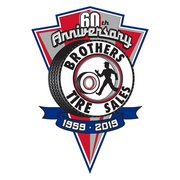
Many vehicle owners take their cars to the auto mechanic due to poor vehicle handling and trouble steering. Some drivers are unaware that the problem often lies in their steering systems, as these components smoothly direct a vehicle where you want it to go. Below, learn more about this system and how it impacts your car.
The Rack & Pinion
To navigate turns and curves on the road, a driver turns the steering wheel left and right. This, in turn, rotates a steering column that reaches below the car. In this location, you can find the rack and pinion, which is the most common type of steering mechanism used by passenger vehicles. The pinion, rotated by the steering column, is a gear whose teeth fit into a notched bar, called the rack. When you turn the steering wheel, you turn the column, which rotates the pinion. The teeth of the pinion then move from notch to notch along the rack, causing it to shift leftward or rightward. When the rack moves in either direction, so do the wheels, which are attached through a series of linkages. In that way, a simple movement of your hands and arm can guide the direction of your car.
The linkages involved in the steering system mean you must turn the steering wheel less than you would without them to achieve the same turn radius. This speeds up reaction times and helps you respond quickly to the unexpected. Also, during a turn, the inside wheel turns more sharply than the outer wheel because the outer wheel cuts a wider arc and must travel a longer distance. This prevents tire wear and improves fuel efficiency.
Problems with rack and pinion systems arise when the bearings and bushings wear out. You might experience slippage or a wobbly steering wheel. See a mechanic immediately if you notice steering difficulties.
Power Steering
 Because cars weigh thousands of pounds, you could have difficulty turning the tires without help, especially when the car is motionless or moving slowly. Your car provides this help in the guise of "power" steering.
Because cars weigh thousands of pounds, you could have difficulty turning the tires without help, especially when the car is motionless or moving slowly. Your car provides this help in the guise of "power" steering.
In traditional power steering systems, the engine powers a pump that transports hydraulic fluid through tubes to the steering mechanism. Hydraulics work because liquids do not compress. You can then put a small amount of pressure on a fluid and generate lots of power. This power assists you in turning the tires, despite the weight of the vehicle and the friction of the rubber tires against the pavement.
Cars of recent manufacture often use one of two types of power steering, which utilize an electric motor separate from the engine. In the first type, the motor powers the hydraulic pump. In another type, the motor itself powers the steering system without the use of hydraulic fluid.
Dirty or low power steering fluid can cause the wheels to groan or shudder while turning, especially at low speeds. A fluid flush may fix this issue. However, it could also mean your power steering pump is failing. If it should give out entirely, you will lose all power steering assistance. This makes the car unsafe to drive.
If you seek a reliable auto mechanic, contact Brothers Tire Sales in Kannapolis, NC. They have served Rowan County and the surrounding region for more than 50 years. They specialize in steering problems, tire service, brake repair, oil changes, and other auto maintenance requirements. They also offer great prices on new tires. Learn more about them on their website or call (704) 933-2203 to make an auto mechanic appointment.
About the Business
Have a question? Ask the experts!
Send your question

